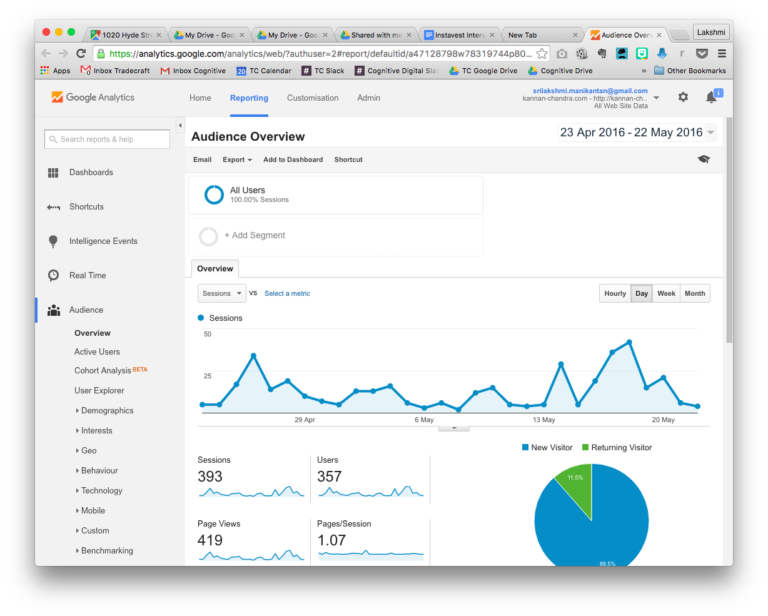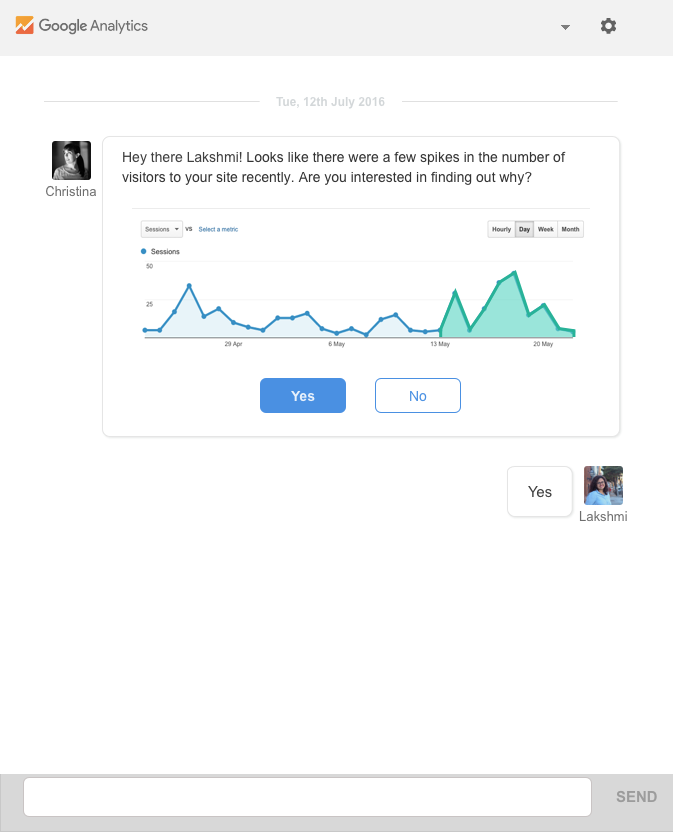This is the first part of the 2-series article about the reasons hy conversations will reinvent software.
In years to come, conversations will breathe new life into software—particularly the boring enterprise tools millions of knowledge workers begrudgingly use every day. Conversational user interfaces (CUIs) work because of our familiarity with messaging.
Even the most technically complex interactions can look as simple as getting an SMS text when presented as a conversation
There are three benefits conversational user interfaces have over traditional software and we believe these lessons can inform and inspire the redesign of countless online services.
To illustrate the potential of conversational interfaces, we’ve reimagined what Google Analytics, one of the most widely-used (and widely-despised) pieces of enterprise software could look like as a conversation.
What’s it all for anyway?
Before diving into our redesign, it is important to consider some fundamental questions. What is enterprise software for? What job does it do for the user?
Fundamentally, enterprise software helps the user answer one or more of the following questions:
-
What’s important? (Surface relevant information)
-
What do I do next? (Support decision making)
-
How do I do it? (Facilitate action)
That’s about it!
Not all enterprise software does all three, but it must do at least one. In the case of Google Analytics, the software is heavy on surfacing information in an attempt to answer the first question, light on decision support, and provides little in the way of facilitating the next action (with the exception of helping the user buy Google ads).
Interestingly enough, the conversational interface answers all three of the above questions better than the software tools we have today.
1. What’s important? (Surface relevant information)
Instead of having to sift through the drop-down menus, tables, functions, and buttons found in today’s software, tomorrow’s conversational interfaces will be able to send and receive messages in plain English.
By simply asking a question via a conversational interface, the user will get the relevant information they’re looking for.
But what happens when the user doesn’t know what they want? What about the valuable insights trapped in the data?
With today’s traditional interfaces, like Google Analytics, an alert appears in the top right corner, annoying the user at best or ignored entirely at worst. Opening Google Analytics today reveals an intimidating explosion of charts and graphs full of data but short on insight.
What does it all mean? Is the user in the red? Or is everything okay?

By using a conversational interface instead, Google Analytics would ensure important information isn’t ignored, making it more easily understood.
For example, the mockup below informs the user of an anomaly, namely, that there was a recent spike in the number of visitors to the user’s website. That’s the same information presented in the Google Analytics dashboard, but with a very different effect on the user.

Dashboards today pump out data and expect the user to do the rest. However, tomorrow’s conversational interfaces will surface insights first, then back them up with data as needed.
Notice how Christina, the new face of Google Analytics, prompts the user with a question to move the conversation along. Christina could be a bot, a human, or hybrid thereof.
It doesn’t really matter to the user as long as the job gets done.
Do you want to explore two more fundamental questions for entrepreneurs in terms of software? The second part of the article will appear soon! For now, let me know what do you think so far in the comment section below!
For more business and entrepreneurship tips, check our entrepreneurship section and subscribe to our weekly newsletters.






